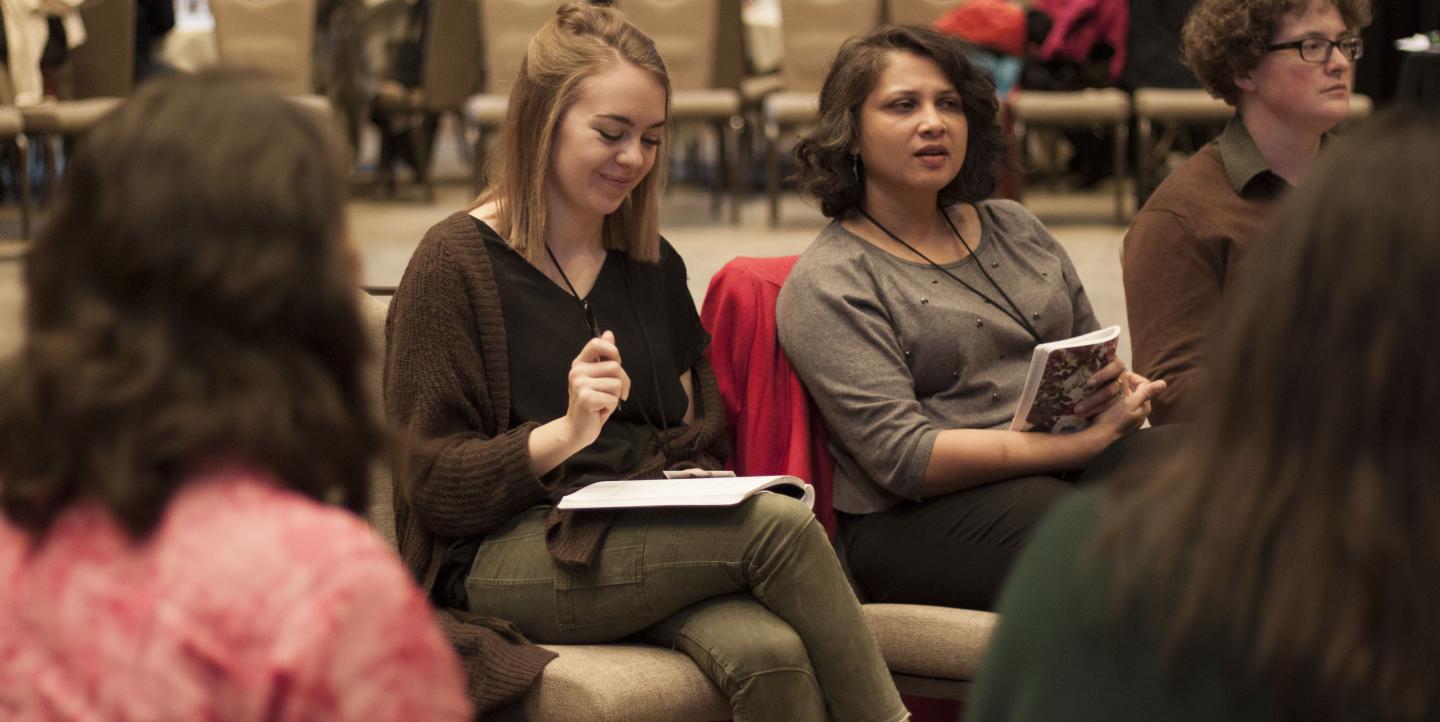Toward the beginning of the inaugural Solutions Journalism Network Summit, the crowd raised a question: does solutions journalism strengthen trust in media? The answer at the start of the weekend: we hope so.
Held Nov. 2 to 5 at the Sundance Resort in Utah, the stunning location matched the exuberance of the nearly 100 journalists and journalism educators who all shared the same passion for solutions journalism — a rigorous reporting practice that emphasizes evidence-based responses to social problems.
Since taking a course in solutions journalism as a student at the University of Oregon’s School of Journalism and Communication, I’ve been able to practice its methods, even publishing a story about the application of technology to help homeless youth in the local community.
As a senior on the eve of embarking on my own professional journey, the opportunity to attend the summit and see firsthand how news organizations are successfully — and with great effect — putting into practice the rigorous, solutions-oriented reporting techniques I’ve learned during my time in j-school was inspiring — and one I won’t soon forget. Journalists analyzed their implementation of solutions journalism, sharing their successes and challenges.
Witnessing and taking part in these captivating conversations was enlightening and the takeaways from the summit are numerous. But among them all, my mind is still ringing with one overarching theme: the importance of engagement and how engagement can help restore public trust. I heard several groups discuss their desire to engage the community around them and others share the value of engagement taking place between journalists and audience.
Linda Shaw, editor at The Seattle Times’ Education Lab, led a session discussing the very real effects its solutions reporting and focus on engagement has made in Seattle.
Shaw detailed one specific case, in which, through a series of stories, her team engaged its community of readers by first highlighting a problem that existed in the city regarding school discipline. This idea of “table setting” the problem, Shaw explained, is necessary to ensure that readers are aware of the gravity and reality of a problem before challenging the status quo through rigorous reporting on solutions.
Simultaneously, the Education Lab’s team incorporated engagement through several methods of community interaction. Reporters held in-person, local events to meet and discuss stories with readers; attempted to answer openly questions virtually about stories; and published guest and student essays alongside their own reporting.
Next, Shaw’s team reported on how specific schools were implementing solutions. Education Lab reporters focused locally to keep readers engaged and aware of the real solutions happening in their own city. The local school board quickly changed its policy on school discipline and less than a year later, the state of Washington did as well, crediting reporting from The Seattle Times.
In j-school, I’ve learned to report with accuracy, honesty and fairness. Simultaneously, we must be equally transparent and clear about what we do not know and why we do not know it — drawbacks and failures that exist alongside solutions must be acknowledged and made clear. The recognition of these limitations openly with the community helps create honest and valuable engagement.
In the case of the Education Lab, Shaw explained how her team continuously follows up on solutions stories to report on the challenges and consequences that may have come from solutions. The drive to make it known that not all solutions are seamless helps create trust with the community at large.
As journalists, when our story is published, that’s where the story ends for us, but for the reader, it only marks the beginning. Thoughtful engagement means looking beyond story publication to the interactions that take place once the story’s life has begun for the audience.
In a time where trust, especially in the media, is limited, solutions journalism is embracing engagement to work differently. Hearing from journalists who work across our country — and in some cases, the world — to cover solutions with transparent and real engagement, inspires me to continue to integrate these practices into my own reporting.
My biggest takeaways from the summit will influence the journalist I become: solutions are important. Relationships are important. Transparency is important. Engaging community is important.
In essence, this summit highlighted how engagement is a critical factor for rigorous solutions journalism, and it was an honor to see and learn from so many who are putting this practice.
So, let us ask again: Does solutions journalism strengthen trust in media?
I learned that solutions reporting through engagement that brings together communities can captivate and reach local readers and can ultimately create a deeper, rigorous way of reporting that ideally can strengthen trust.
Morgan Theophil is a senior journalism major and part of The Catalyst Journalism Project at the University of Oregon School of Journalism and Communication.
Main image: Morgon Theophil at the Solutions Journalism Network Summit. Photo courtesy of Brittany Norton.

